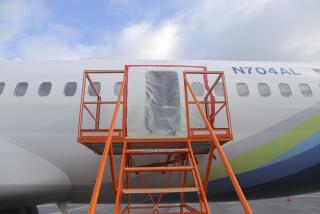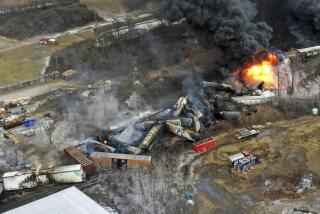A Near-Stall for Air Safety
- Share via
By now, you’ve heard that sabotage did not bring down TWA Flight 800. The FBI’s basis for that conclusion included a detailed computer simulation that illuminated as never before what happened that July night in 1996. Now it’s time to recall the urgent recommendations for safety changes put forth by the crash investigators almost a year ago, and the slow response by the Federal Aviation Administration.
The National Transportation Safety Board developed a theory that an explosive air-fuel mix in the Boeing 747-131’s largely empty central wing tank had ignited, though the cause of a precipitating spark is still unknown. Only the terrorist scenario has been eliminated. Still, the safety board felt confident enough of its theory last December to push for immediate design and operational changes that would help eliminate flammable air-fuel levels in transport airliners.
Among the proposed remedies: inert gas systems, more insulation between fuel tanks and heat-generating equipment, preflight addition of cooler fuel.
The FAA took two months to respond in writing to the board’s urgent recommendations. An FAA letter in February said the safety board was calling for major design changes and other things that “may have little benefit.” The FAA said it would publish notice for a 90-day comment period on the case within a month. But the agency didn’t publish that notice until April 3. So much for urgency.
Last Thursday an FAA spokesman said the agency, finally, would formally respond to the safety board this week, perhaps issuing one or more air-worthiness directives or instructions on the matter. That would be 16 months after the disaster. Perhaps the FAA will say that the facts do not support the safety board’s concerns, but that doesn’t explain enough.
Authorities agree that what happened to TWA Flight 800 was extremely rare. That’s some relief. But Americans deserve an answer to why it takes so long to fully respond to urgent recommendations from federal transportation safety experts and why there has been so little pressure from those experts for better rules. Government agencies must work together with due diligence when the safety of the flying public is in question.
More to Read
Sign up for Essential California
The most important California stories and recommendations in your inbox every morning.
You may occasionally receive promotional content from the Los Angeles Times.










